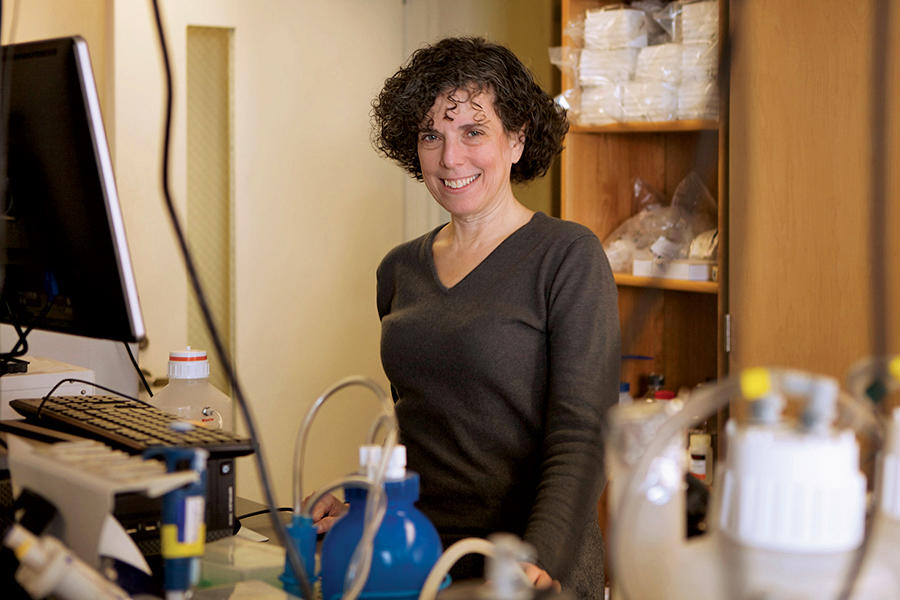As many as four million Americans are thought to suffer from chronic fatigue syndrome, a disease characterized by symptoms that include persistent lethargy, headaches, muscle pain, mental fogginess, and sleep problems — but the illness, once dismissed as the “yuppie flu,” has long frustrated scientists seeking to explain its etiology. To date, there has been no cure or treatment protocol, or even a way to test for the syndrome, but now a breakthrough by a team of scientists led by Columbia epidemiologist Mady Hornig may provide clinicians with a way to diagnose and treat chronic fatigue in its early stages.
In a study comparing blood samples from hundreds of people with chronic fatigue syndrome to those from healthy counterparts, the scientists found differences that support a popular hypothesis about the syndrome’s cause: that it occurs when the immune system, in the course of fighting off an acute infection, gets stuck in high gear and eventually wears itself out. The evidence? People in the early stages of chronic fatigue syndrome have elevated levels of immune-system messenger chemicals called cytokines, which indicate an active immunological response, while those who have been ill for three years or longer have unusually low levels of these cytokines.
“We believe the initial trigger could be any number of viral, bacterial, or fungal infections,” says Hornig, an associate professor at the Mailman School of Public Health who conducted the research with Columbia colleagues who include epidemiology professor Ian Lipkin, as well as scientists from Harvard and Stanford. “The end result appears to be the same: the immune system goes out of whack and exhausts itself.”
Hornig says that the discovery, which appeared February 27 in Science Advances, could form the basis of a new diagnostic test. Physicians currently diagnose chronic fatigue syndrome, also known as myalgic encephalomyelitis or ME/CFS, by checking off a list of symptoms that are judged subjectively; physicians can struggle, she says, to distinguish it from depression, bipolar disorder, and other neuropsychiatric conditions that have similar symptoms. She also says that physicians have a difficult time determining when an infectious disease like mononucleosis, Q fever, or Lyme disease — all suspected preludes to chronic fatigue syndrome — has evolved into the full-blown syndrome, thus necessitating a new treatment strategy.
“We’d love to be able to tell if a person has ME/CFS rather than, say, a persistent case of Lyme disease, simply by looking at their cytokine levels,” says Hornig, who is director of translational research at the Mailman School’s Center for Infection and Immunity. “Today, up to 70 percent of people with chronic fatigue have a delay in their diagnosis of at least a year — and sometimes of ten years or more. It’s really important to get the diagnosis as soon as possible, so that you can begin to think about appropriate treatment strategies.”
Hornig and her colleagues are now conducting follow-up studies to see if measuring cytokine levels is, in fact, useful in making diagnoses. In one study, they are following people with chronic fatigue syndrome over the course of a year or more in hopes of spotting distinct patterns in the fluctuations of their cytokine levels.
The scientists are also optimistic that their discovery may eventually lead to the development of new treatments for chronic fatigue syndrome; the only treatments currently available are drugs that have been approved for other purposes and which physicians prescribe offlabel to target a person’s symptoms.
Regardless of the clinical impact this research may have, Hornig says that her latest discovery ought to give peace of mind to anyone who, in suffering from chronic fatigue, has felt intuitively that something was wrong with his or her body but was told otherwise by a physician.
“Patients are often left wondering why they’re not getting better, the implication being that maybe they’re not trying hard enough and pulling up on the old bootstraps,” she says. “But this is not a problem of a person’s will to get better. This is a biological disease.”



